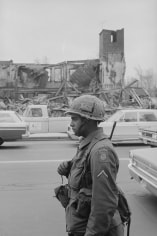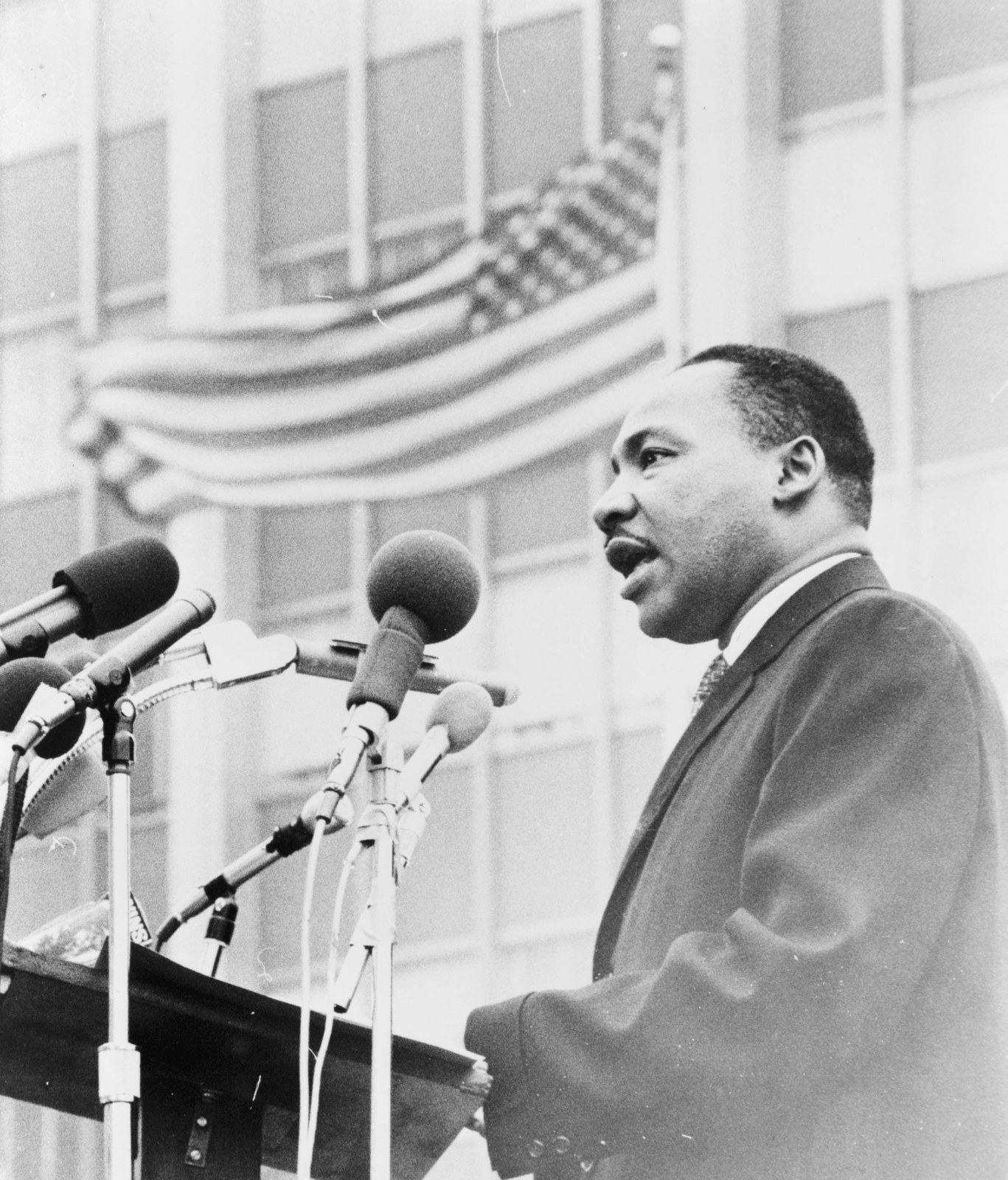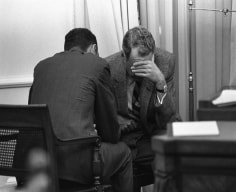
Aftermath of riots following the assassination of Dr. Martin Luther King, Jr., Washington D.C., April 8, 1968 (Courtesy Library of Congress)

Courtesy Library of Congress
Essential Question: How does the work and moral clarity of Dr. Martin Luther King, Jr. affect and influence our lives today?
In this lesson students learn about the breadth and depth of Dr. King’s legacy in our world today through the reflections of friends and leaders in the Civil Rights Movement. Students will apply the historical reading skills of sourcing, contextualization, and corroboration and broaden their skills of close reading strategies by using visual content. Students will analyze historical images, documentary film, and first-person interviews while following the written transcript. As a demonstration of their learning, students will have the option of writing a short essay in response to the assigned writing prompt or to create a visual representation of their learning from King in the Wilderness.
Materials: Equipment for projecting photographs, viewing film clips, and copies of handouts
Length: One 50-minute class period plus a final writing and/or project assessment
Students will reflect upon Dr. King’s legacy by:
*Analyzing historical source material including photographs and documents
*Critically viewing documentary film and first-person interviews to inform their understanding of history
*Synthesizing new learning through developing questions for further historical inquiry
*Demonstrating their understanding of the lesson topic through a final exercise
Teacher Note: This lesson begins with watching a film clip followed by students discussing or responding in writing to the opening questions.
Watch Clip 1: "Are They Poor? We Want Them Involved." (run time 2:47).
*In your own words describe the organizing strategy that Bernard Lafayette, Jr. recounted.
*Where do you see echoes of this strategy today?
*Using your prior knowledge, or ideas from this film clip, what challenges remain today in the struggle for equality? What is different?
Teacher Note: Students will analyze and “read” visual sources as if they were employing literary analysis skills. Project or print and distribute the photographs under the “Images” title on this page and have students discuss the questions in small groups.
*Describe what you see in the photograph.
*What questions would you ask the photographer about these photos?
*How can we know that these images are accurate?
*What larger story do the photographs tell when viewed together?
Teacher Note: The film clip in this exercise is a moving account of how Dr. King’s life and death influenced the lives of those closest to him.
Distribute Handout One: Legacy Today Note Catcher. Review Visual Analysis questions prior to viewing to help students watch the film clip with critical eyes.
Watch Clip 2: "He Speaks to this Generation Clearly" (run time 6:33)
Teacher Note: The filmmakers conducted 19 interviews to produce King in the Wilderness. Those complete interviews are available at www.kunhardtfilmfoundation.org/interview-archive.
For this lesson, two interview threads are available for teachers and students to access that offer new insights and previously untold stories about Dr. King and his legacy. These interviews are part of the Interview Archive but were not used in King in the Wilderness.
Watch the Interview Threads
As they watch, students will:
* Follow along on the transcript.
* Underline details that catch their attention.
* Jot down questions and insights that come to mind after viewing the threads.
Thread One: "What Dr. King Accomplished" (run time 1:39)
Featuring Clifford Alexander and Joseph Califano
Thread Two: "How We Honor Dr. King" (run time 8:49)
Featuring Marian Wright Edelman, Richard Fernandez, and Cleveland Sellers
Discuss:
* What do we learn about Dr. King's legacy from these first-person accounts that are different from other kinds of historical sources?
Teacher Note: After viewing and reading the interview threads, have students choose one or more historical details that stood out to them to practice the process of corroboration. Students will research and identify a credible historical source that will verify or complicate the detail they selected from the interview.
Here are suggested archives to use to find corroborating evidence:
1. The King Center
2. Stanford University: The Martin Luther King, Jr. Research and Education Institute
3. Library of Congress
Ask students: What other sources can you use to help you better understand memories and recollections as historical resources?
* Reflect on the depth and breadth of Dr. Martin Luther’s King, Jr’s legacy in your own life, in your immediate community, or within your nation, and have students share any closing thoughts or questions.

Aftermath of riots following the assassination of Dr. Martin Luther King, Jr., Washington D.C., April 8, 1968 (Courtesy Library of Congress)

Clark Clifford and another staff member reacting to the news of Martin Luther King Jr.'s assassination, White House, Washington, D.C., April 4, 1968 (Courtesy LBJ Presidential Library)
Writing Prompt
Clarence Jones states in King in the Wilderness: “From 1956 until April 4th, 1968, Martin Luther King, Jr. may have done more to achieve political, social, economic justice than any other person in the journey of American history.” Applying the new knowledge gained from King in the Wilderness, The Interview Archive, and other independent research, write an essay refuting or supporting Clarence Jones’ claim.
Creating an Artifact
As an alternative to a writing assignment, students can create a visual expression of how they understand the legacy of Dr. King. For example, students can create a piece of visual art, music, or another artistic expression.
Anchor Standards
Reading Literature and/or Information: Integration of Knowledge and Ideas.
RL/RI.X.7. Integrate and evaluate content presented in diverse media and formats, including visually and quantitatively, as well as in words.
RL/RI.X.8. Delineate and evaluate the argument and specific claims in a text, including the validity of the reasoning as well as the relevance and sufficiency of the evidence.
RL/RI.X.9. Analyze how two or more texts address similar themes or topics in order to build knowledge or to compare the approaches the authors take.
Speaking and Listening: Comprehension and Collaboration.
SL.X.1. Prepare for and participate effectively in a range of conversations and collaborations with diverse partners, building on others’ ideas and expressing their own clearly and persuasively.
SL.X.2. Integrate and evaluate information presented in diverse media and formats, including visually, quantitatively, and orally.
SL.X.3. Evaluate a speaker’s point of view, reasoning, and use of evidence and rhetoric.
Writing: Research to Build and Present Knowledge.
W.X.7. Conduct short as well as more sustained research projects based on focused questions, demonstrating understanding of the subject under investigation.
W.X.8. Gather relevant information from multiple print and digital sources, assess the credibility and accuracy of each source, and integrate the information while avoiding plagiarism.
